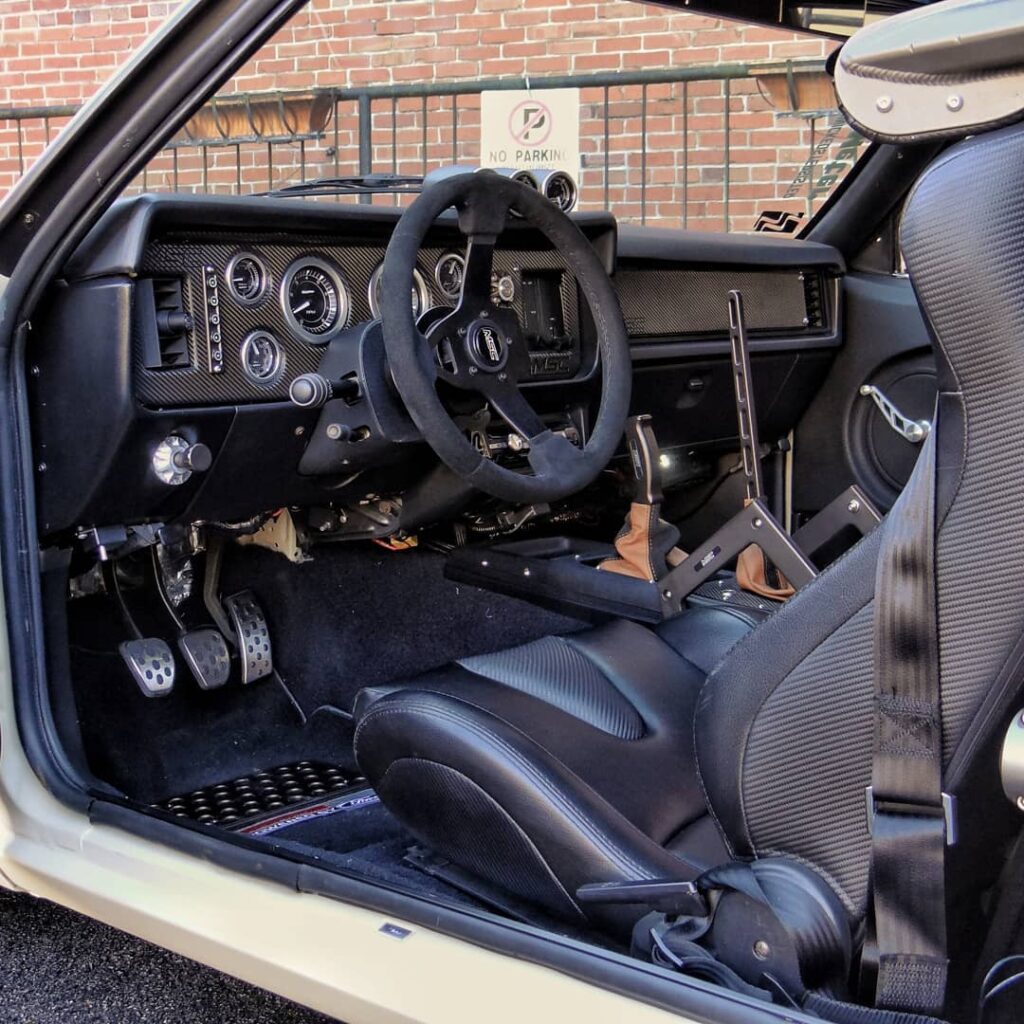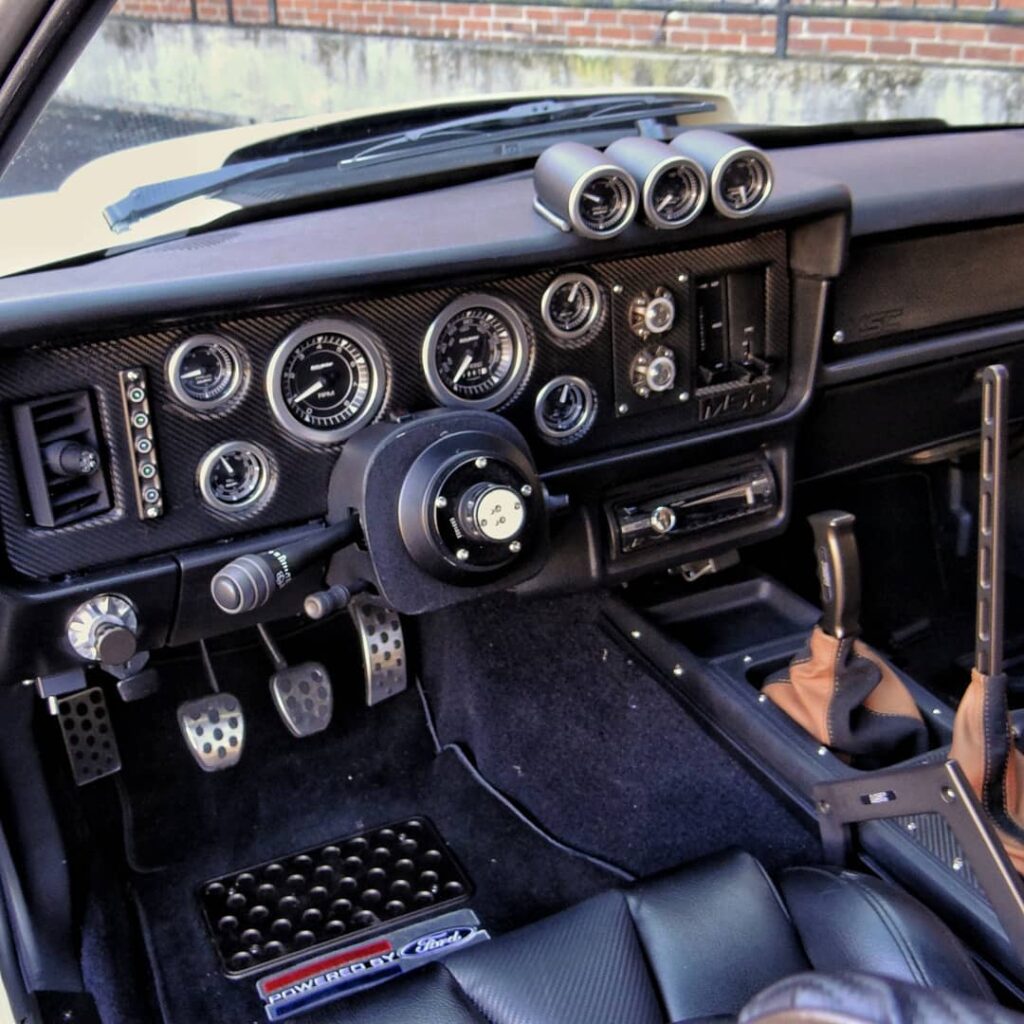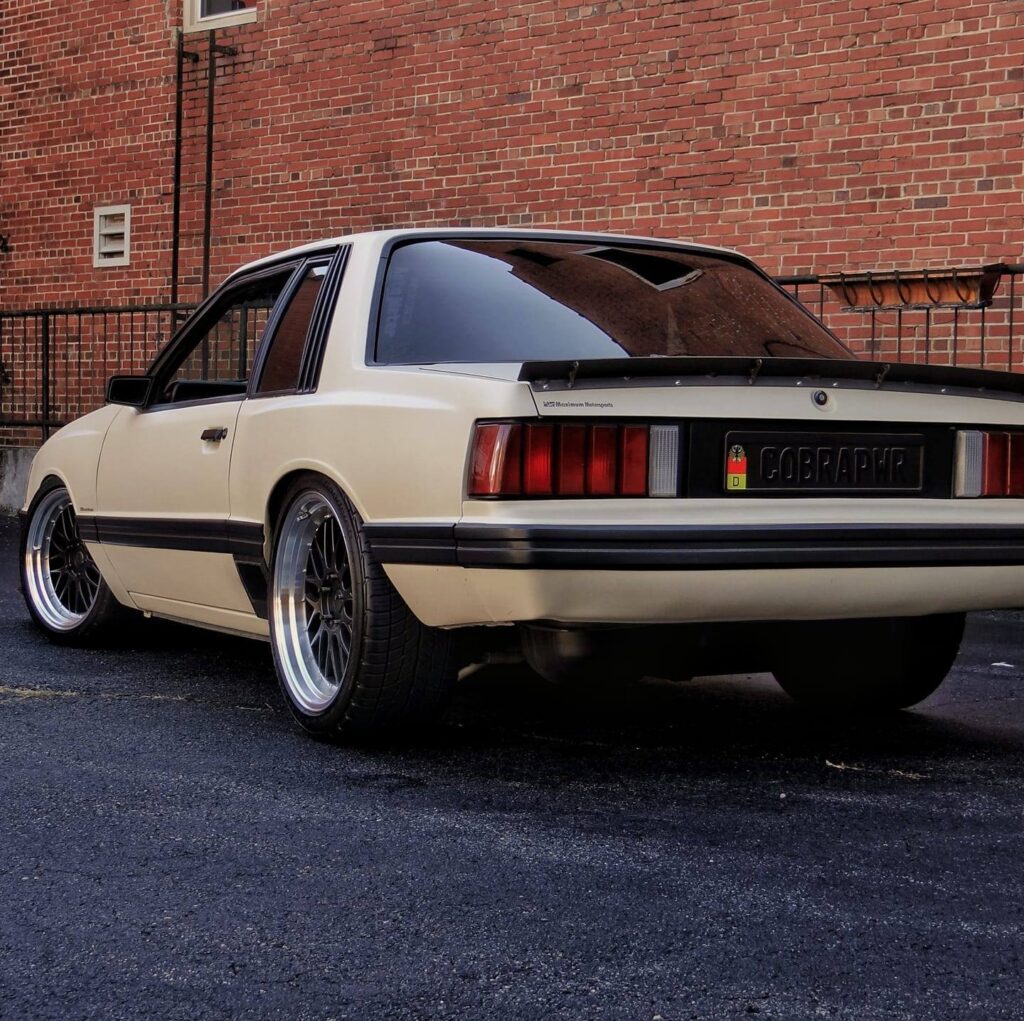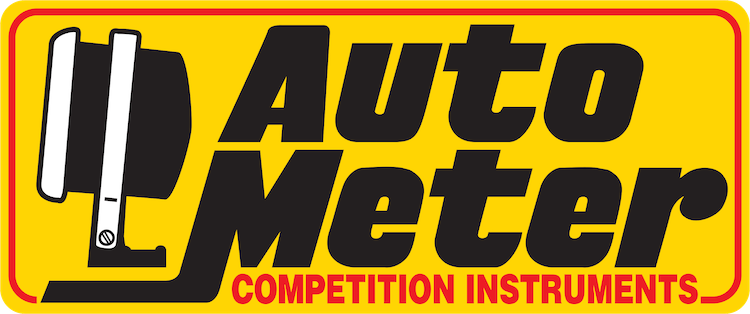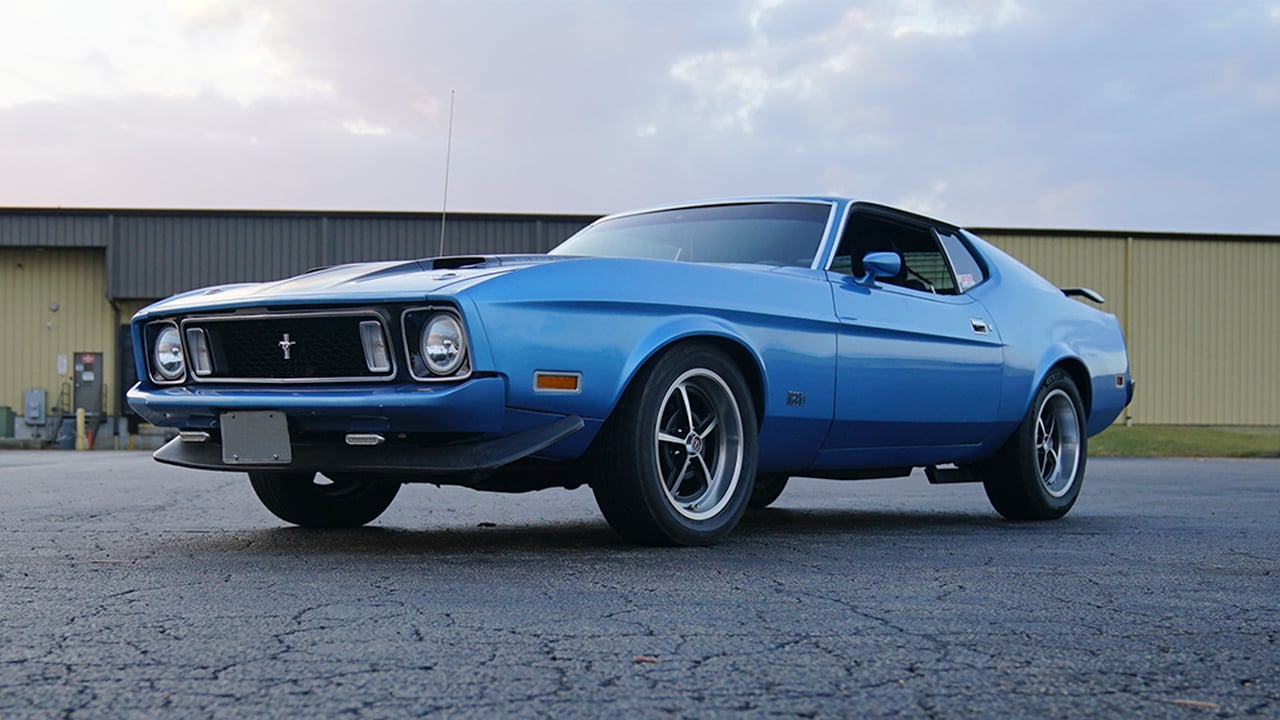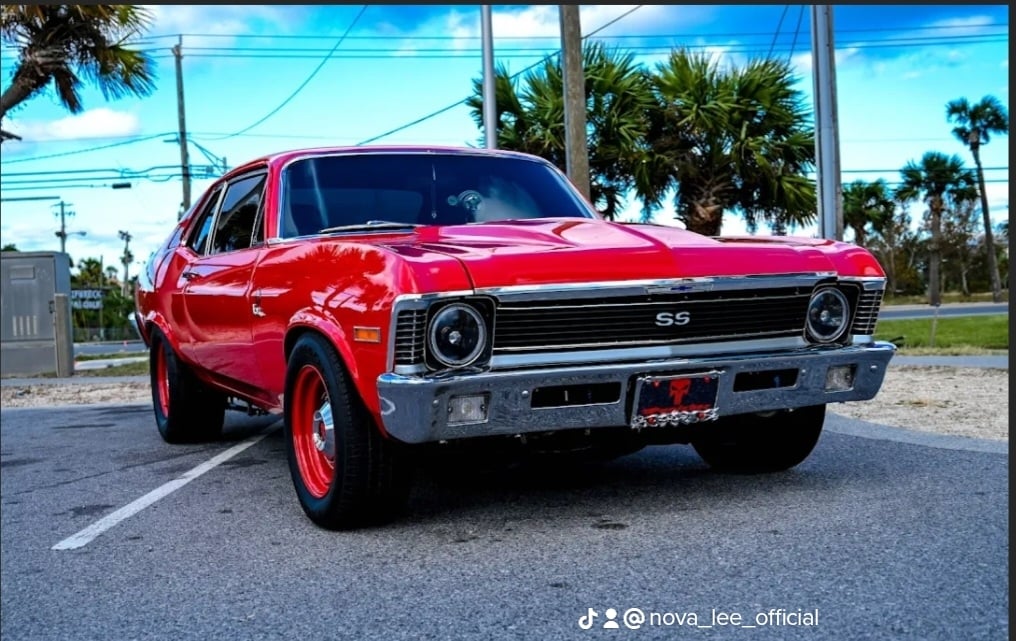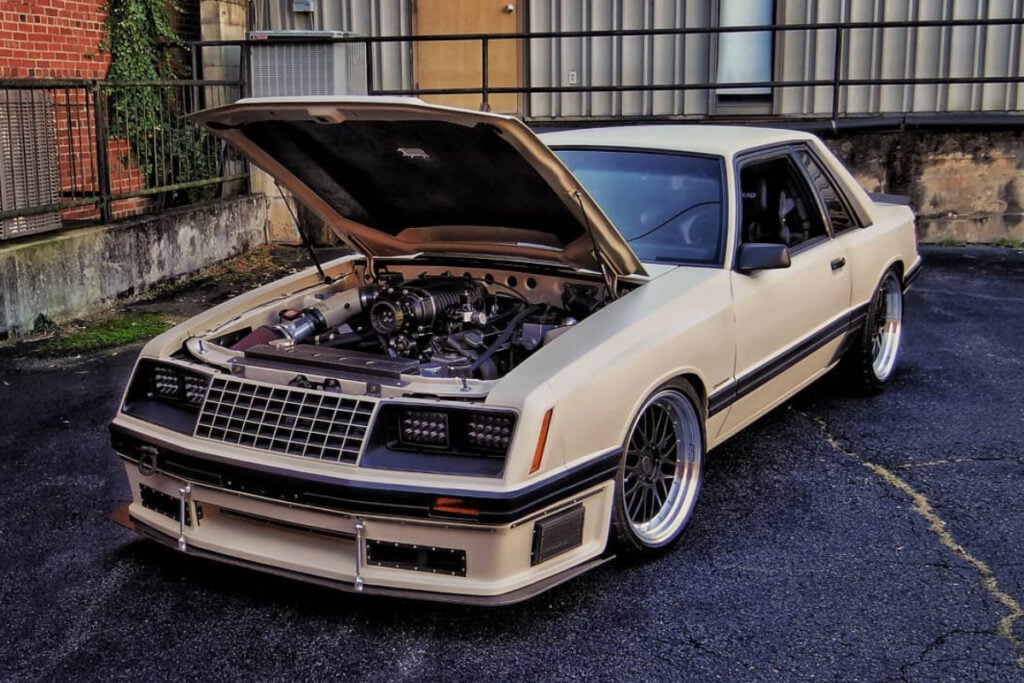
The build that came to be known as the “Wicked Stepsister” all began when Robert Miller was searching for a roof skin for one of his other cars, a sand beige 1987 Mustang 2-door coupe. He was working from a lead on a junkyard with about fifteen Fox Body Mustangs in it that he got off a “Want to Buy” Facebook post. Upon arriving at the junkyard, Robert and his friend Mark Spicer (@wraith_mustang) found a 1981 Mustang that was a great candidate for the roof skin, but they ultimately decided it was too solid to cut up and opted for a different donor car.
After that, they turned their attention back to the 1981 Mustang. It was originally a four-cylinder four-speed car with a caramel interior and an exterior hue of Ford’s Pastel Chamois. The owner of the junk Fox Body was a local dirt track racer and had bought them only for the motors, transmissions, and rear ends. He offered him a deal where he could buy any or all that he wanted for $300 each as long as he brought the motor, transmission, and rear end back.
Over the next few months, Robert got all but three of them. He brought them home one by one by digging them out of the mud and dragging them onto the trailer with no winch. After removing the drivetrains, he would head back with a bed full of motors and transmissions and pick up another one. He would part out what was salvageable to help pay the way for the roof repair on Sandy, but there was little money or time left for another project right away.
For the first six months after bringing it home, the 1981 had become yard art in his carport. He knew that it should be built, especially since it was destined to the grave just six months earlier. The car was extremely solid and it presented itself as a blank canvas. One day, he decided to put a set of 18″ wheels up under it and laid an old Indy pace car hood scoop on it. On that day, he decided to build one more car.
Robert named the car the Wicked Stepsister. The idea was that Sandy was the pretty face coupe with nice paint on a mild drive train. She was the special girl (car) that you didn’t want to cut up or modify. The 81, however, was destined for the crusher. What would it hurt to cut holes in the rear floorboard and run exhaust out the quarter panels? He had always wanted a Capri coupe and replacing the original fenders for Capri ones wasn’t a big deal. The quarter panel had the exhaust coming out the side, so it wouldn’t hurt to replace the whole quarter panel with a Capri one. These types of ideas begin to snowball. Soon, it didn’t matter if the part was brand new or something hard to find. If it needed modifying to fit the theme of the build, Robert did it. He wanted a road race American Iron series-themed car that is not necessarily for track racing but has the look.
He bought a new Xenon lower valance and cut brake ducks in the side of it and attached it with some aluminum strips he picked up from the local hardware store. Custom touches like the front air ducts and side-exit exhaust cutouts were made by his good friend Scott Hatrick at Dynamic Metal Innovations. Robert would make a cardboard template and mail it to Scott, who would then turn his thoughts into reality. For other items like dimple dying the firewall to match the custom radiator support and the interior, he simply tried it himself, and luckily it worked out.
Robert sourced an old eight-point roll cage from a drag car and cut it into a road race-inspired cage with an x-brace behind the main hoop. Another good friend of his, Eric Woodruff, happened to have an extra 1978 Mustang ll console laying around. After doing some research, he felt it was the best candidate for incorporating a mildly stock-appearing console that would fit the hydro drift brake.
Robert felt like he hit a home run with the interior of the car. He didn’t have a specific timeline for completion, so it gave him a lot of time to research. With all of his previous builds, he had always used AutoMeter gauges to keep up with important things under the hood.
“AutoMeter has come a long way in the style category for that next level type of build that I was searching for in this car. From their website, there were over forty styles to choose from. I spent a few weeks looking through them all before deciding on the Chrono series,” said Robert. “The look of these gauges is completely different from any of the AutoMeter gauges I’ve used in the past. The function along with the simplicity of the install made it an easy choice. The Chrono series has a great three-dimensional look to them that offers a look and feel that is not available anywhere else on the market.”
Robert also added a classic dash bezel from ClassicDash.com that brought to life an otherwise boring 1981 Mustang stock dash. He also added on the LED dimming module to adjust the lighting for any environment and an LED indicator light kit since he had lost the factory turn signals and bright light indicators. He had some custom gauge bezels leftover from a previous car that he used to put three of the Chrono gauges on top of the dash.
From there, his ideas started small and snowballed. He added a custom headlight switch knob, custom billet buttons bezels, a hydro brake coming from the center console, Corbeau seats, and an MGW shifter. “Anyone who sits down in it feels like they are getting ready to pilot a fighter jet. Add the butler head restraint, the Audi Grab bars, and the custom 79 door panels with dimple die inserts and you know this interior is not your average Fox Body interior. It might even be confused for an American Iron Race Car,” says Robert.
The end result is far from the Mustang’s humble beginnings as a four-cylinder coming off Ford’s assembly line. Robert purchased a 2001 GT that had been Cobra swapped for several years with a solid drive train as a donor car. It also had several suspension parts including BC racing coil over struts and shocks that required nothing more than cutting some metal and drilling new holes to fit. He also swapped over a Maximum Motorsports panhard bar and a torque arm bar and added Maximum Motorsports torque arm springs and adjustable weight jacker control arms to finish out the rear suspension. Later on, he found a good deal on a complete Stifflers web brace kit along with Stifflers cross member. Parts like these made their way on the car continuously throughout the build.
“The go-cart feel of this car is amazing except for the 668 horsepower and 717-foot lbs of torque thanks to the massive Whipple 3.4L supercharger. When the boost hits you better be pointed straight and holding on, as it will spin the 19×9.5 Vors wheels and B.F. Goodrich Super Comp tires at ease,” says Robert. Richard Shaffner at Shaffners Custom did the blower swap and encouraged him to go E85 to get the most out of the 3.4, but Robert was able to source a 4″ Ricard Racing pulley thanks to Ernest Miller. He was able to keep boost at roughly 17-18 lbs. This allowed him to stay on 93 Octane and gave him a good reason to cut a hole in the hood for the pulley to stick through. Wicked was the idea of the build, so any reason to cut a hole was a good reason.
At this time, Robert hasn’t pulled the drift brake yet as he’s still trying to get used to how the car feels. He wanted to add the drift brake since drifting has taken the automotive industry by storm. John Duncan of Duncan Motorsports offers dual rear caliper brackets for the Fox length rear end and Robert knew it was something he had to add to this car. “I feel that it pulls from several aspects of automotive culture so far only a few have said that they wouldn’t do that, but it earns respect from everyone who is a car guy or gal,” says Robert. “Describing the exhaust tone from the drivers’ seat is hard. If you can imagine a 70 Boss Mustang combined with Bill Elliot’s 87 Thunderbird screaming down the backstretch of Talladega Speedway, that would get it close. It’s so radical yet so awesome it has to be the best sounding car I’ve ever owned.”
Robert Miller is from Roaring River, NC. For more on the Wicked Stepsister, follow him on Instagram, @81svtcoupe.
1981 Mustang 2-Door LX
Engine
- 2003 Cobra 4.6L Supercharged V8
- Whipple 3.4L Supercharger
- Accufab Single Blade Throttle Body
- JLT Cold Air Intake
- SCT Mass Air Flow
- Tuned: Kurgan Motorsports/Shaffners Customs
Exhaust
- Kooks Long Tube headers
- MAC Prochamber Mid Pipe
- SLP Loudmouth Mufflers
- Custom Side exit with Flow Master Tips
Transmission
- T56 6 Speed
- 26 Spline Input Shaft
- Spec Flywheel
- Spec Stage 3 Plus Clutch
Rear End
- 8.8 Rear End
- 3:73 Gears
- FRPP drive Shaft
- Moser 8.8 Girdle
- 5 Lug Ranger Axles
Brakes
- Baer 13″ Front Calipers
- 13″ Crossed Drilled Rotors
- Duel Rear Caliper Bracket by Ducan Motorsports
- Duel Rear GT Calipers
- Crossed Drilled Rotors
- Wilwood Hydro Drift Brake 3/4 Bore
- Baer Remaster Brake Cylinder
- 03 Cobra Hydro Boost
Front Suspension
- UPR Tubular Chrome Moly 4.6 K Member
- Maximum Motorsports Tubular A-Arms
- BC Racing Front Struts and Coil Overs
- Maximum Motorsports Bump Steer Kit
- 94 Mustang Spindles
- Kenny Brown Adjustable Sway Bar
Rear Suspension
- Maximum Motorsports Panhard Bar
- Maximum Motorsports Torque Arm Bar
- BC Racing Adjustable Shocks
- Maximum Motorsports Weight Jacker Tubular Lower Control Arms
- Maximum Motorsports Torque Arm Springs
- Steeda Sway Bar
Exterior
- Satin Beige PPG Single Stage
- Xenon Lower Front Valance (Custom Inserts front and side)
- H.O. Fibertrends Hood
- Mercury Capri Fender
- Mercury Capri Quarters (Installed by 67 Auto Medics)
- Custom Rear Duct Tail Spoiler
- Side Exit Exhaust
- Powder coating by Precision Powdered of NC
- Exterior paint: color code 8L “Sand Beige” PPG single stage paint, satin done by Mark Spicer
- Interior dye by National Parts Depot (Low Luster Black)
Interior
- AutoMeter Chrono Speedometer (Model #8188)
- AutoMeter Chrono Tachometer (Model #8197)
- AutoMeter Chrono Pressure Gauge (Model #8153)
- AutoMeter Chrono Temp Gauge (Model #8137)
- AutoMeter Chrono Fuel Level Gauge (Model #8116)
- AutoMeter Chrono Voltmeter (Model #8192)
- AutoMeter Chrono Air/Fuel Gauge (Model #8170)
- AutoMeter Boost Gauge (Model #8103)
- AutoMeter LED Indicators (Model #3283)
- Grant Steering Wheel
- NRG Quick Release
- Corbeau Seats
- MGW Shifter
- Hurst Pistol Grip handle
- Classic Dash Bezel
- Custom Roll Bar
